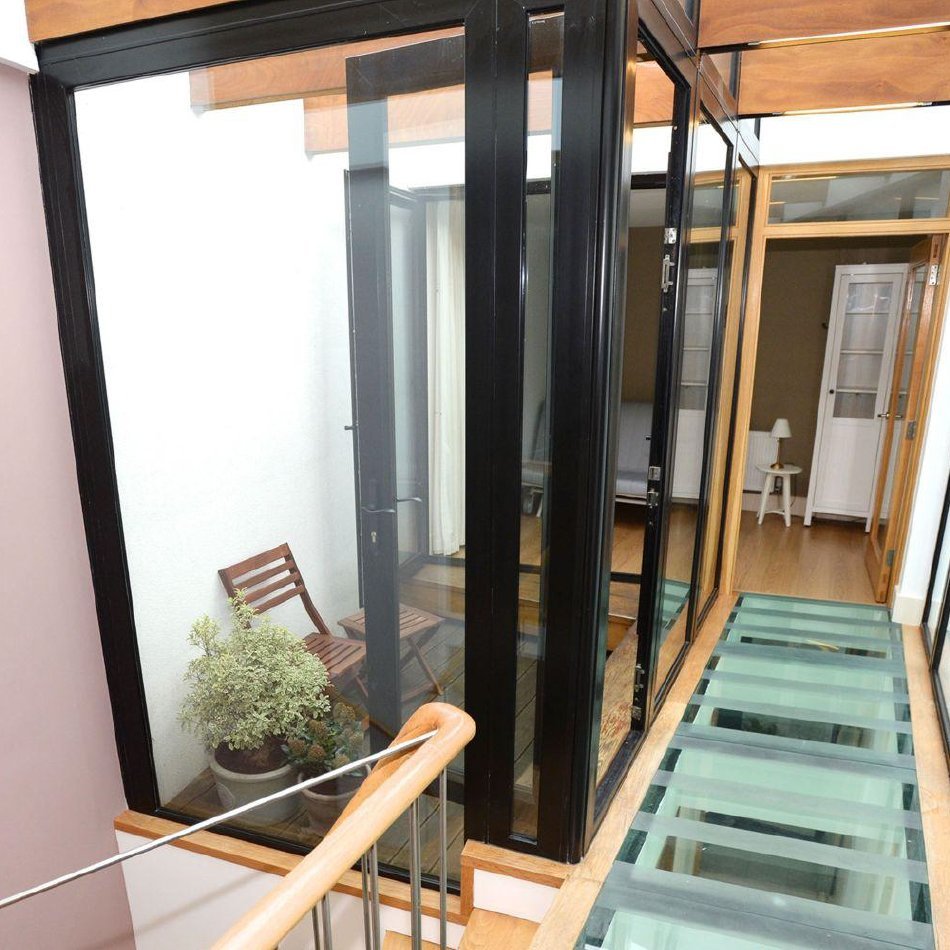
The Intersection between ‘Grand Designs’ and Small Spaces
In his celebrated and hugely influential 1973 book, Small is Beautiful: A Study of Economics As If People Mattered, German ‘Buddhist Economist’ E.F. Schumacher wrote that, “Any intelligent fool can make things bigger… but it takes a touch of genius – and a lot of courage – to move in the opposite direction.”
And yet, three decades later, by the turn of the 21st Century, it appeared that such ‘intelligent foolishness’ continued to prevail in the realm of architecture.
Here in good old Blighty, right around the time that Osama Bin Laden was plotting to fly American Airlines Flight 11 and United Airlines Flight 175 into the global built environment’s most iconic pairing, Norman Foster and the Arup Group were busy unleashing their plans for 30 St Mary Axe in London, eventually and carefully dubbed ‘The Gherkin’ by an innuendo-conscious British media who were all-too-aware of its looming, euphemistic presence on the Cityscape.
Back across the pond, meanwhile, our Alpha-American architectural brethren made a decisive move to stick it to the Taliban with a bigger, better One World Trade Center, seemingly built as much as an affront to terrorism as it was out of simple necessity for a new place of work for New York Financiers. If big and strong wasn’t big and strong enough in 2001, by the time 2014 rolled around, bigger and stronger had finally arrived, ready to prove that it could deliver the goods in terms of fighting the good fight of Global free trade.
Smart spatial utilisation is the order of the day and it’s a clarion call for visionary thinkers
And, yet, fast forward a few short years to the present day and a January 2019 report by housing charity Shelter says that three million new social homes must be built in England over the next 20 years to solve the housing crisis. Yes, in England alone – a country actually identical in size to the shoe of a dormouse! That’s three million homes in a tiny country of 55 million people already seemingly packed to the brim and with 277,000 homeless people spilling out onto the streets.
So yes, when it comes to British architecture, size really does matter. But the great, grand achievements of the 21st Century might, arguably, not be so much related to bigness as they are to functionality and sustainability. Smart spatial utilisation is the order of the day and it’s a clarion call for visionary thinkers unwilling to compromise on aesthetic glory even as they find new ways to deliver compact, functional and gratifying living environments for an ever-growing population.
The new built environment will increasingly fuse outdoor and indoor spaces. It will use more hardwearing materials like Corian as it becomes more widely and inexpensively available. Beauty and functionality will collide in a world of geometric ingenuity. The Internet of Things will increase our ability to successfully operate within smaller spaces by reducing the clunkiness of our old lives. And clever storage solutions will allow architects the opportunity to express their passion for durability, design and functionality even within the confines a 3sqm bathroom.
The new built environment will increasingly fuse outdoor and indoor spaces
TV shows like architect George Clarke’s Amazing Spaces on the Channel 4 network and gardener Monty Don’s Big Dreams, Small Spaces, made by the BBC, have proven to the general public time and again that it can be done. And it feels like the tide is beginning to turn in terms of our professional priorities, too. Architects like Mícheál de Siún are setting an incredible example for the rest of us, delivering wide scale social housing solutions that tackle the issue of reduced space with aplomb. de Siún´s one-bed, three-metre-wide, micro house in Dublin’s Liberties has won him wide critical acclaim, even managing to squeeze in an impressive downstairs bathroom and closed off utility room.
As architects, we must continue to unlearn all that we have learned in terms of leaving a legacy and follow the brilliant examples set by the likes of de Siún. Future generations will no longer look to the most imposing buildings as bastions of the genius of architecture. The most lauded amidst our profession, rather, will be those who find the most successful ways to fuse aesthetic perfection with social conscience and positive environmental impact.
If you want to read more about Interior Design, click here